Android Auto Continues to Ask Me to Touch Notification
Android Auto makes it easy to get your infotainment essentials in a wide range of cars and countries without having to manually fiddle with settings or even learn how to use a new user interface when switching vehicles. It integrates seamlessly with many car head units, and even lets you use your favorite navigation software or select media apps while driving. For the most part, it's a great experience. It also relies on Assistant to help out while driving and can even provide recommendations to make your ride smoother and help you keep your eyes on the road.
But Android Auto and Google Maps sometimes drive me nuts (pun intended), which often lead me back to my car's otherwise-inferior infotainment system — or just my phone-in-hand, which isn't great for safety. Here are my Android Auto nitpicks.
Keep in mind I'm sharing a personal opinion and not trying to undermine Google's approach to safety. However, the company has deliberately limited features that are much more convenient to use on a regular Android phone, or sometimes even a car's system itself. There are even apps to help you use your phone more safely while driving, so why not simply bring some existing Android features on the car's screen, instead of limiting them.
We all have to peak a screen while driving, such as the dash to monitor our speed, or even glance at the head unit to find our way. As long as we're not staring and fiddling with the screen throughout the whole ride, it should be safe to make some of the below features more usable on a ride.
1. Planning an itinerary
If you're simply going to a specific location and don't need to review your route, Google Maps does an excellent job on Android Auto. However, it's particularly bad at giving you an overview of the potential options to consider, despite doing it brilliantly on a phone. Sure, you can still review the various options, but this requires an extra tap while driving, instead of showing the options before starting the guidance.
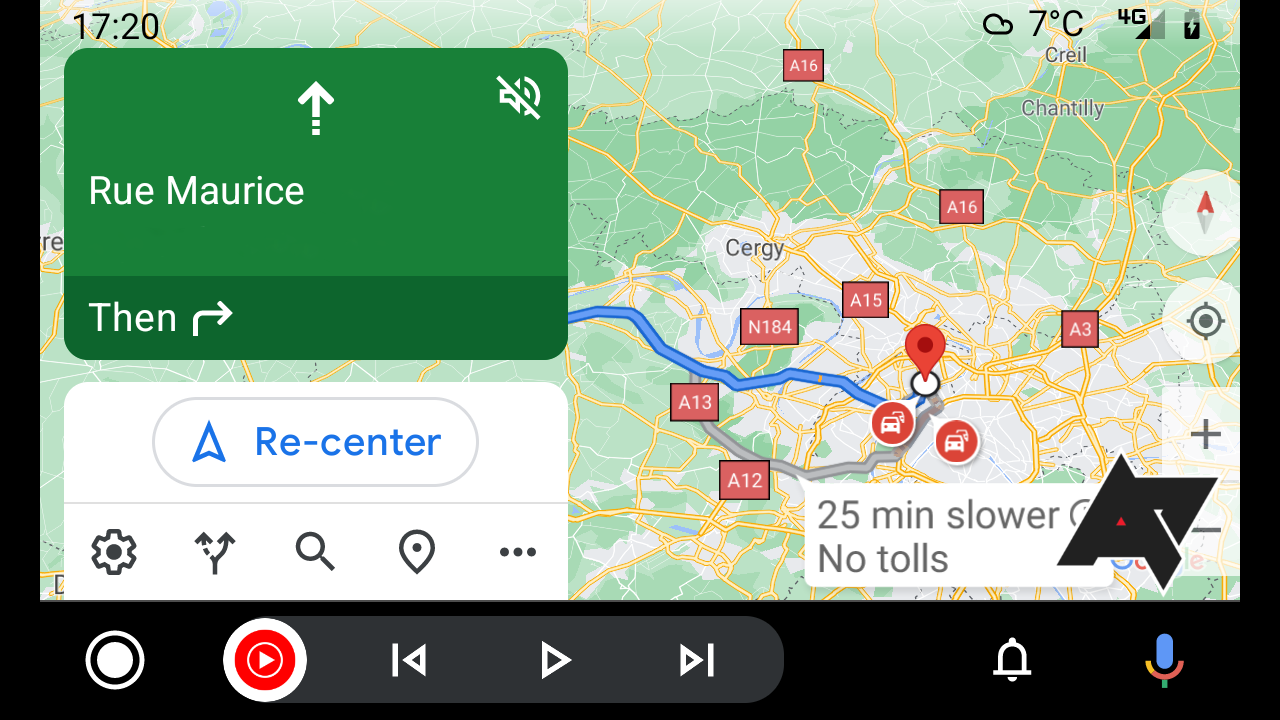
Worse, things get much more complicated if you plan on adding a stop, whether it's to refuel, eat, or even to halt at a specific place. An easy example is planning for a pit stop: While it's relatively easy to do on your phone using the Search along route feature, things aren't well-designed on Android Auto: Instead of showing places along your route, it will display places close to you, but not necessarily on your way. It also won't show all the options and only list a few on the left. There is also no way to pan and browse the map to select the one you want to stop at. Worse, you also can't tap a dot to directly navigate to it.
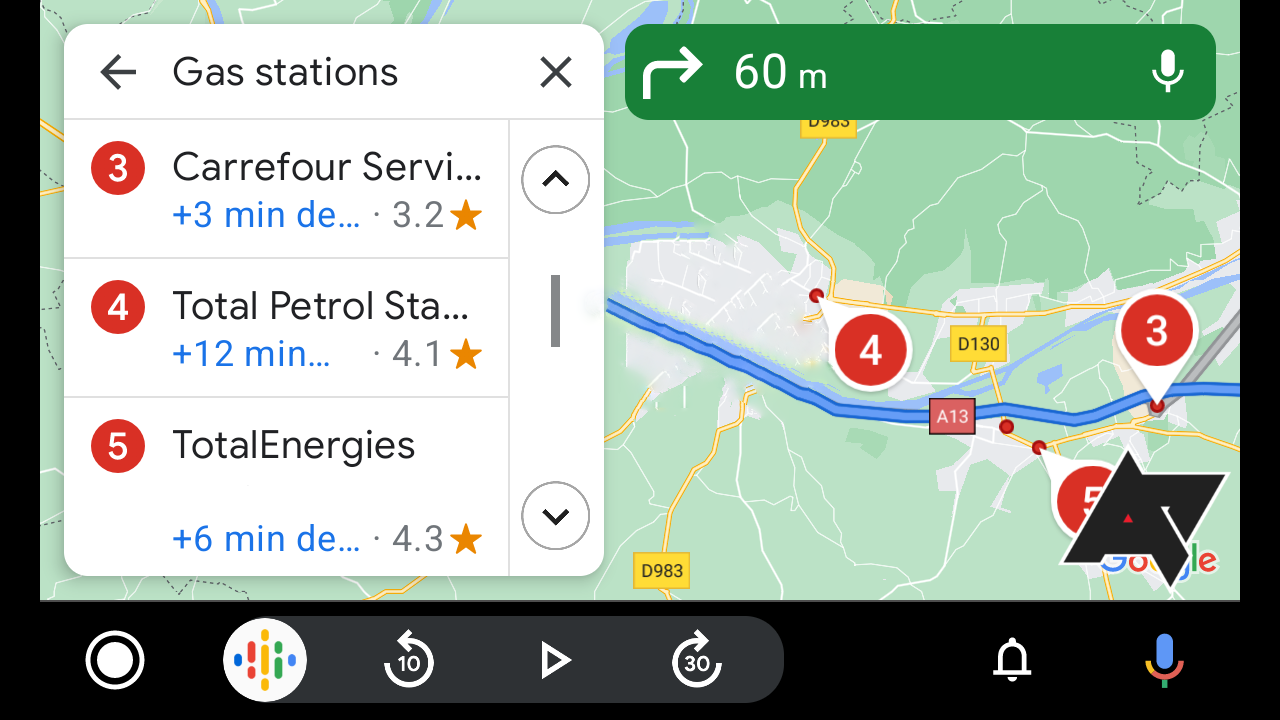
This design decision was made to avoid letting drivers look at their displays for too long, but it often ends up taking the focus from the road for much longer to figure out where to go.
What's even more annoying is that the driver can't ask a passenger for help, as there is no way to open Google Maps on the connected phone while driving, while you can do that on an iPhone using CarPlay. This would have been a great way to hand your handset to someone nearby to do some planning safely and add the next stop to the itinerary shown on the car's main screen.
2. Entering an address
It makes perfect sense you shouldn't be writing a text message while driving, especially not on your car's screen. However, most cars let you enter an address or search for a POI, even if you're driving. Sure, it's all about keeping your focus on the road and only entering a few letters when needed, but Android Auto will not even allow that while driving. Instead, it wants you either shift into park or put the parking break on to type in any kind of text. It would make more sense to check your speed and let you type in an address while stopped at a traffic light without requiring you to go through that much hassle, which is similar to how Apple's CarPlay platform handles text input. Even though it is far less safe, I sometimes end up unplugging my phone, typing in what I need to find, and plugging it back in for guidance.
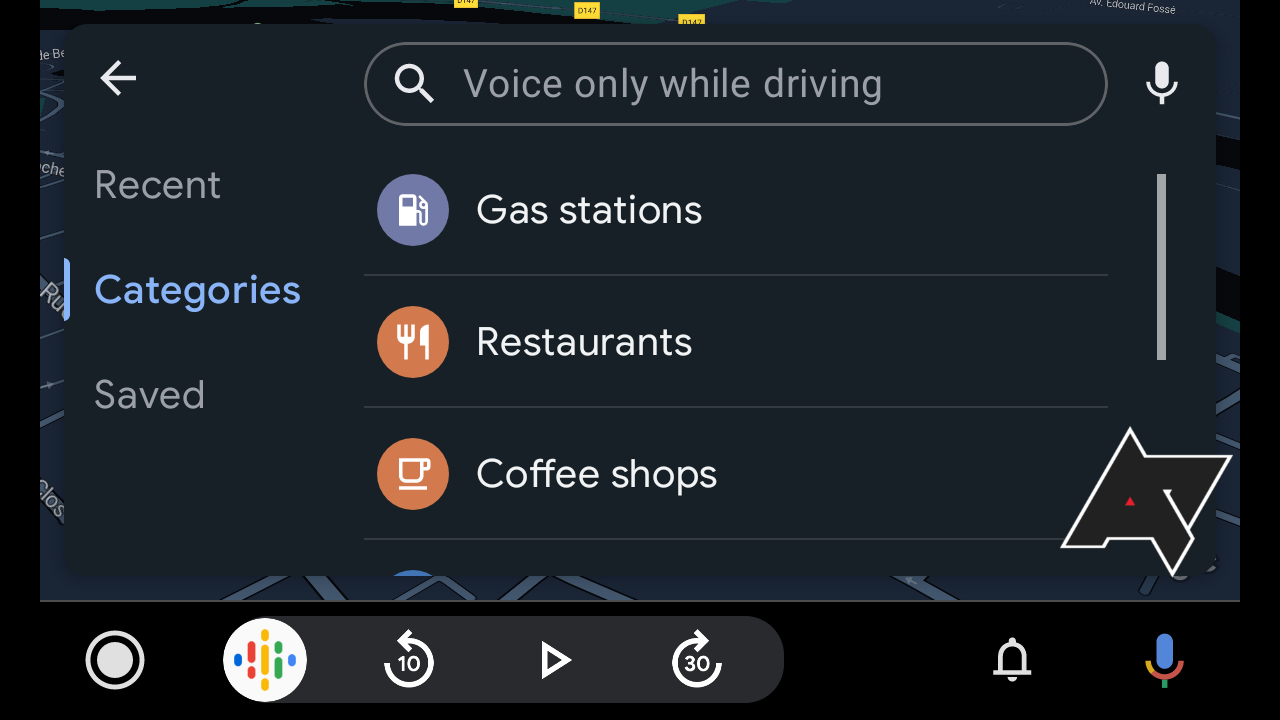
Things shouldn't be so complicated, especially not when driving. Although it's fair for Google to want to make them safe, it should apply common sense when it comes to typing in a few letters and suggesting the right destination.
Now, you could argue that Google's voice recognition system is great, and one shouldn't have to type in an address. Sadly, this doesn't work for a variety of places, mainly when it comes to complex street names or points of interest that are hard to interpret, especially outside the US.
3. Location Sharing
A feature I particularly love in Google Maps is the ability to share my location and itinerary. Not only does this let you send your current location, but also your ETA, which will automatically be updated according to traffic conditions. Although you can do this with Android Auto, you can only share your trip with Google Maps contacts. It would have been far more convenient to send a text or WhatsApp message to any contact saved in your address book.
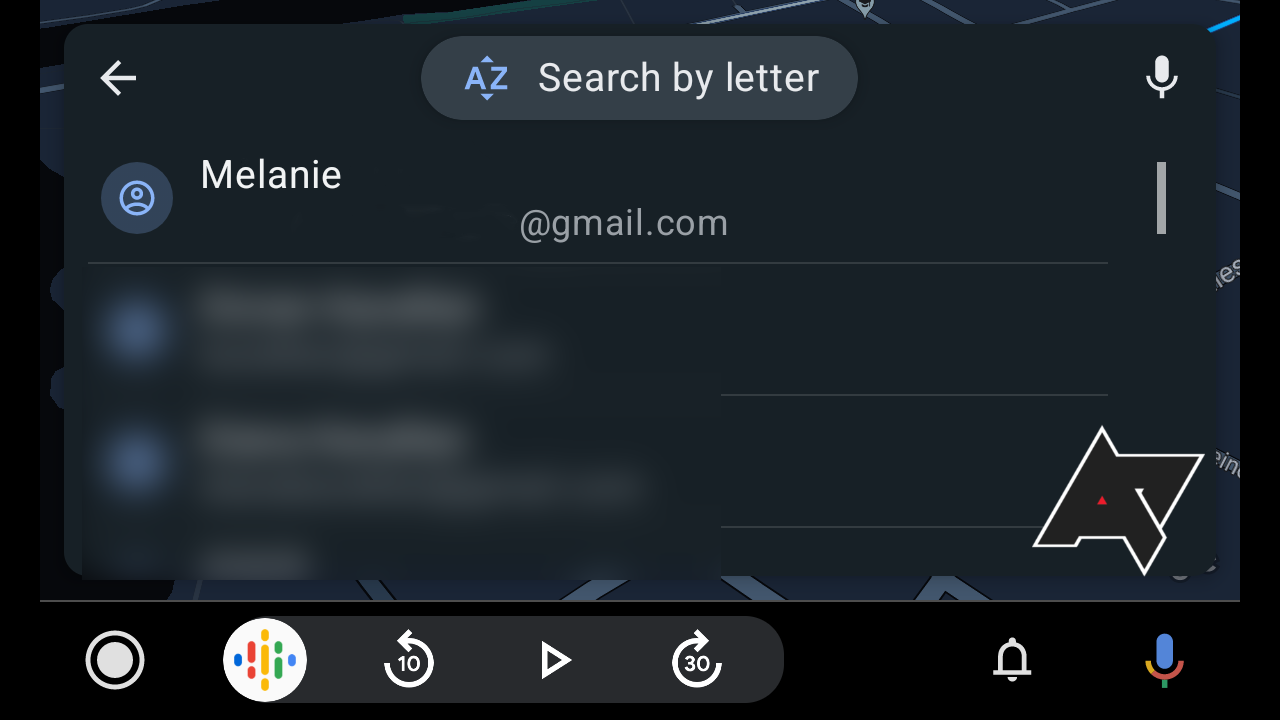
The feature's there, but it's just not properly implemented to make sense when driving. Worse, as mentioned above, you can't even do it — or ask a passenger to do it for you — from your phone, because Maps won't open on the handset when using Android Auto.
4. Messaging
Although Google has improved how it handles messages thanks to Smart Replies, it still needs some work. First, you can't read a message on your car's screen and can only ask Google to read it out loud. To be fair, I'm pretty impressed at how it's been able to recognize someone wrote to me in French and said "Message from [Sender]" before reading it in French, and then asking me in English if I wanted to reply, brilliantly switching from one language to the other. That being said, it could show the message on the screen, albeit for a limited time, making it easier to decipher things like names, addresses, codes, etc. For now, it can only show a quick preview of the first words. Many cars do that, including for SMS and email, so why not Android Auto?
There is also an option to ask Assistant to read your messages aloud even after receiving the notification, but the list is only limited to the ones you've received during the current drive... Why impose this limitation when it's easy to retrieve all your conversations? The driver is likely to peak at the message on the phone while driving instead of reading it later.
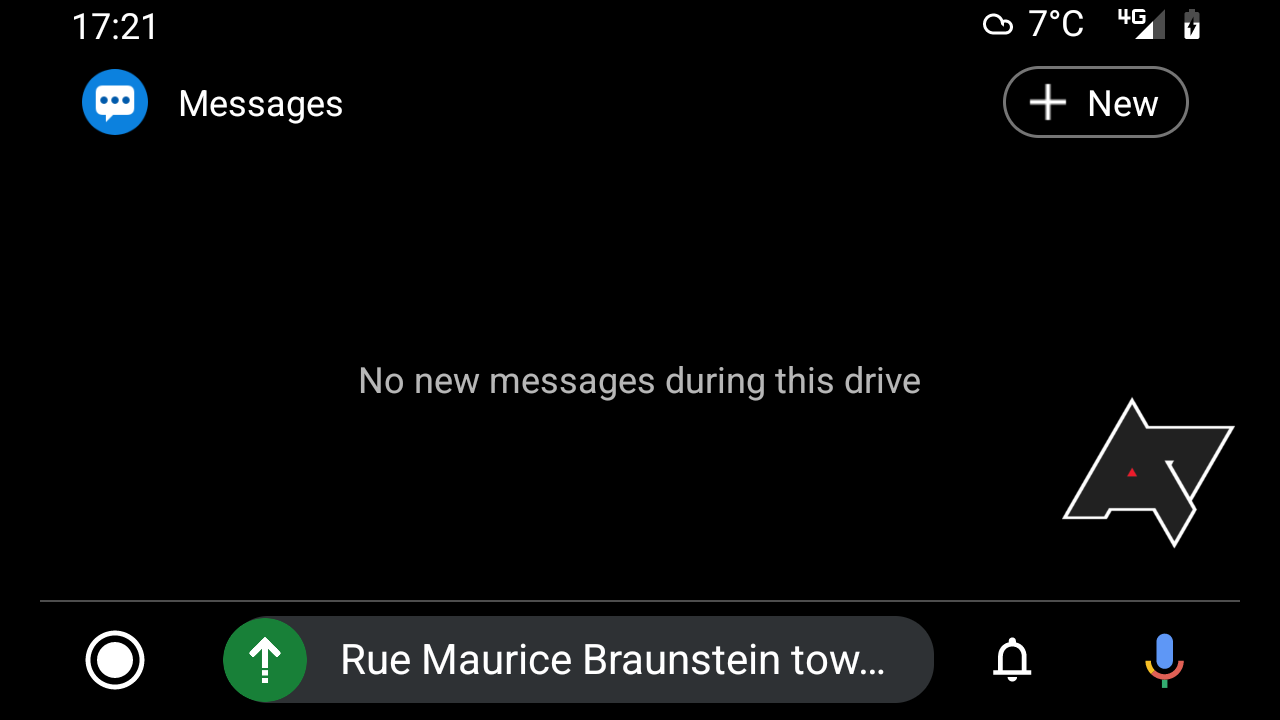
What's particularly ridiculous — and to be fair, it's not entirely Google's fault — is how WhatsApp voice messages are handled. They're probably the most convenient form of communication available when driving, as you can listen to a recording through the speakers and even record your own to reply. But there's no way to do that with Android Auto, and you'll have to reach for your phone to either listen to or send one, which makes absolutely no sense in terms of safety and usability. Of course, you can use dictation to send a message, but Google still misinterprets some words and ends up sending gibberish or unintended messages, while it could simply record a snippet of your voice and let you send it via WhatsApp or even RCS.
5. Music or Podcasts
Whether you're using Spotify or YouTube Music, the overall experience is quite good, especially if you're going to listen to recommendations or a playlist. However, things become harder when asking for a specific song, as Google Assistant understands what it wants to hear. To be fair, it often gets the track right, but what if you want an acoustic or live version? Why isn't there a list that pops up with three to five options to pick from? Even worse, what if you're looking for a specific podcast in a series? It's hard to argue that this would pose a safety threat, compared to all the options you can browse from in a modern car's infotainment system, even while driving.
6. Incident reporting
Like with Waze, Google Maps lets users report traffic incidents such as crashes, slowdowns, lane closures, speed traps, etc. It does, as long as you're using your phone, that is, as the feature isn't available on Android Auto. The whole point of reporting these incidents is to do it live when driving to warn other road users of potential hazards. What's even harder to understand is that Waze does offer this feature through Android Auto, but Maps doesn't... It's like Google doesn't want users to share their insights with each other.
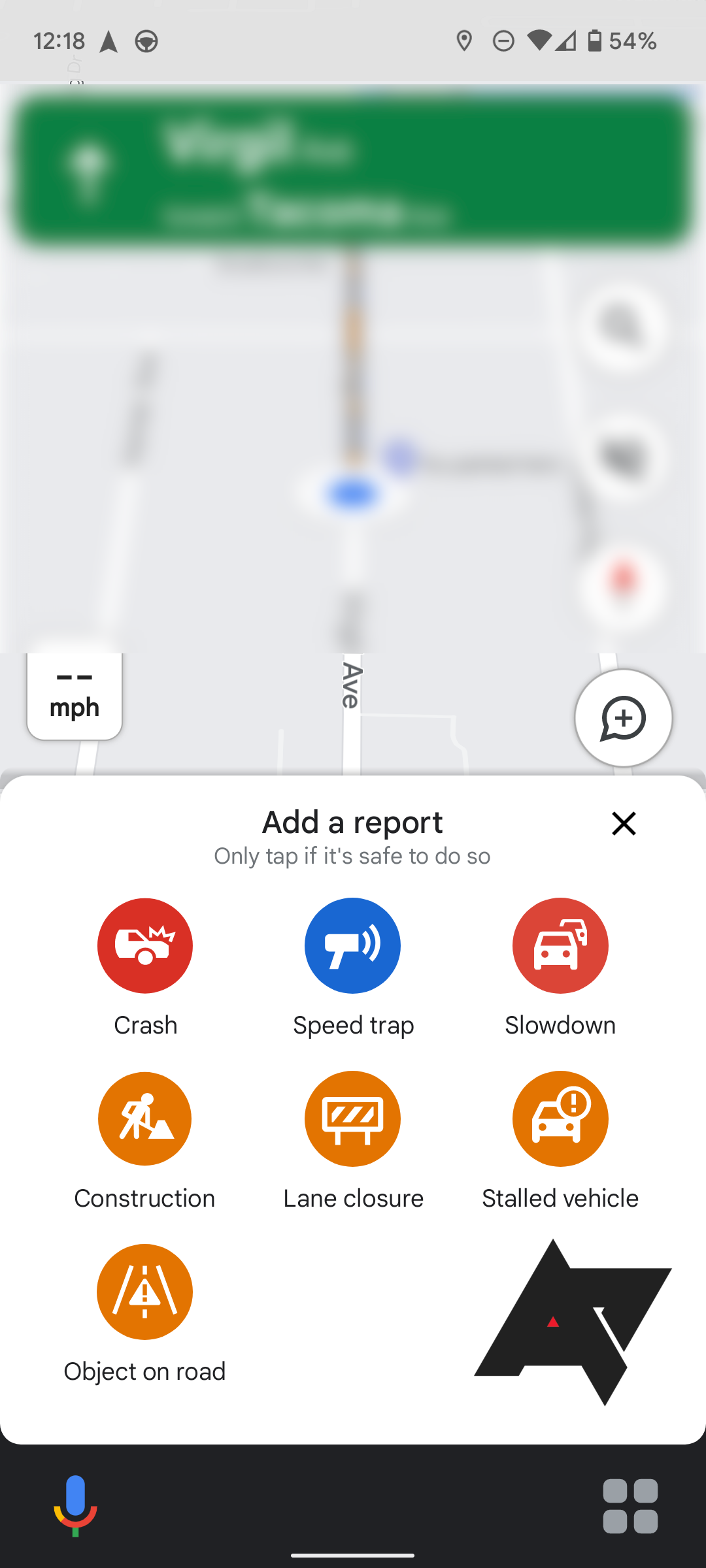
7. Phone temperature
Although this isn't a big deal, Android phones tend to get really warm when used wirelessly with an Android Auto head unit. They're also relatively slow and laggy to use and lose a lot of battery, really fast, which is why I prefer plugging my phone in rather than using it wirelessly. Things become particularly heated when using your car's wireless charger and wireless Android Auto at the same time, as the phone will prevent charging due to the high temperature.
Again, if we compare this to Apple's CarPlay, I haven't seen an iPhone get extremely warm and slow when connected to a car's infotainment system.
Conclusion
Don't get me wrong here: I do appreciate Android Auto — most of the time. It's been a lifesaver when renting a car or when I wanted to navigate to a POI without having to bother searching for its address. It's also particularly convenient to listen to podcasts or music on a daily commute, making it seamless to interact with some of my favorite apps.
But there are times when it drives me crazy, and I wish I had a dumb car mount instead. The overall idea is that the system limits what you can do on your car's screen, which in some situations makes perfect sense in the name of safety, but in others, it encourages you to use your phone and even to disconnect from Android Auto, which is far less safe than letting someone use their car's head unit.
My point is that looking at a screen isn't always dangerous, as long as it's done consciously. We all look at screens when driving, to monitor our speed, get directions, change the radio station, etc. So why restrict so many actions when it would be simpler to allow minor interactions, and perhaps set a timeout that prompts you to look at the road after a few seconds?
Many car manufacturers allow users to do most of the actions mentioned above, including reading text messages and even emails on the screen while driving. If they allow it, they and various other people see it as being safe enough. Sure, it's commendable for Google to put safety first, but it shouldn't come as an excuse to limit features, when some other built-in systems allow these actions natively while driving. Even worse, a lot of people use their phone while driving; wouldn't it be safer to look at your car screen instead of your phone?
I wish Google didn't limit the options so drastically and applied a bit more common sense instead of restricting useful features and making things harder when driving, a situation in which things should be done easily and smoothly, for maximum safety.
This being said, Google is constantly working on making Android Auto better. With a new interface, together with more features and apps coming up, Android Auto could become even more helpful while driving, without having to compromise safety.
Source: https://www.androidpolice.com/things-i-hate-about-android-auto/
0 Response to "Android Auto Continues to Ask Me to Touch Notification"
Post a Comment